President's Message
Fellow woodworkers
We visited Barcelona while on our vacation and saw the famous, but still unfinished, Sagrada Familia - probably one of the most amazing building I have ever seen in my life. It is a church that would be at home in Disneyland.
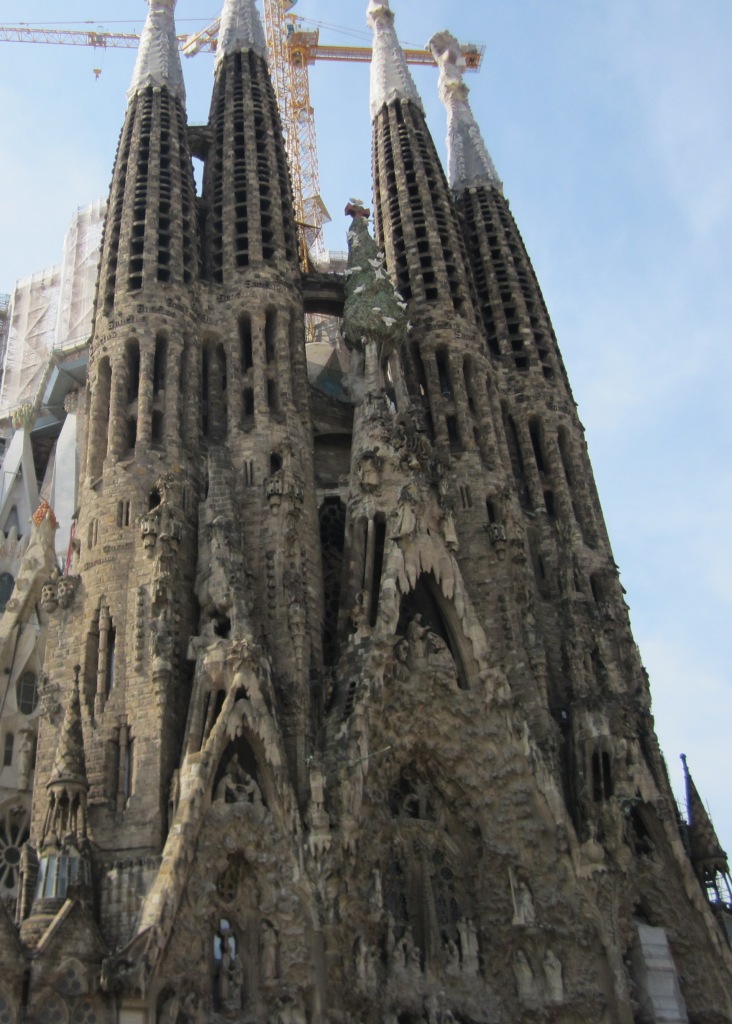
After building started in 1882 as a "normal" style of gothic church the design was handed over to the architect Antoni Gaudi in 1883 and evolved into the amazing "warped Gothic" structure it is today.
There are few straight lines or conventional looking structures. The finished building will have 18 towers, all different, and the interior columns holding up the ceiling are all set at angles to the floor.

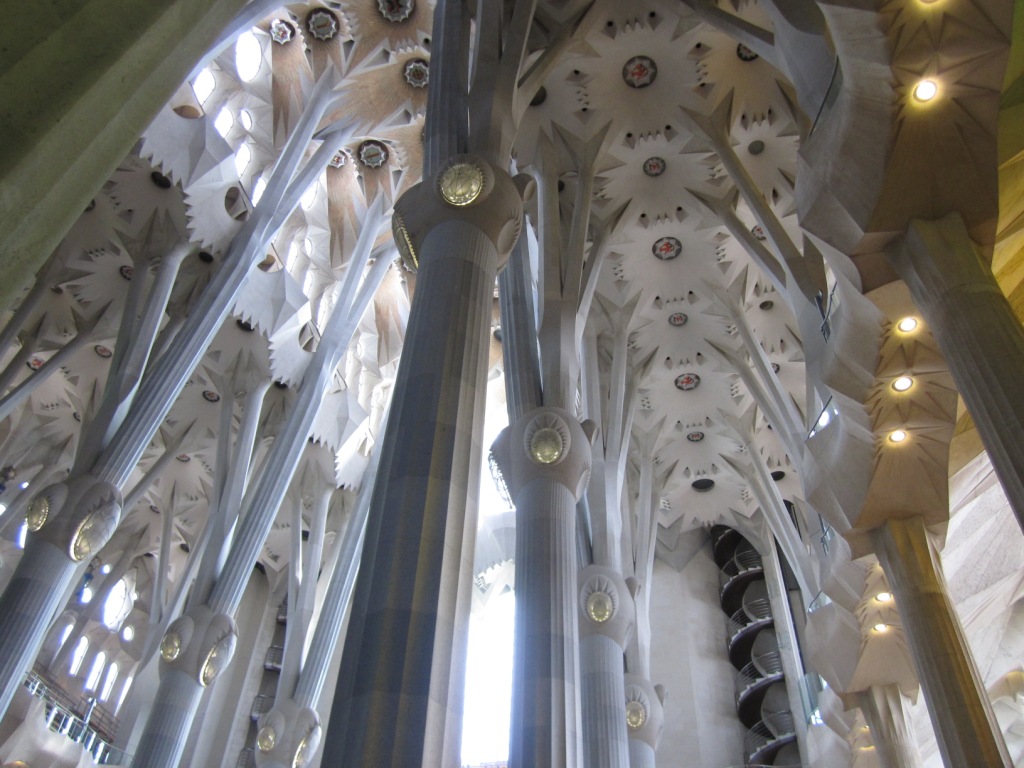

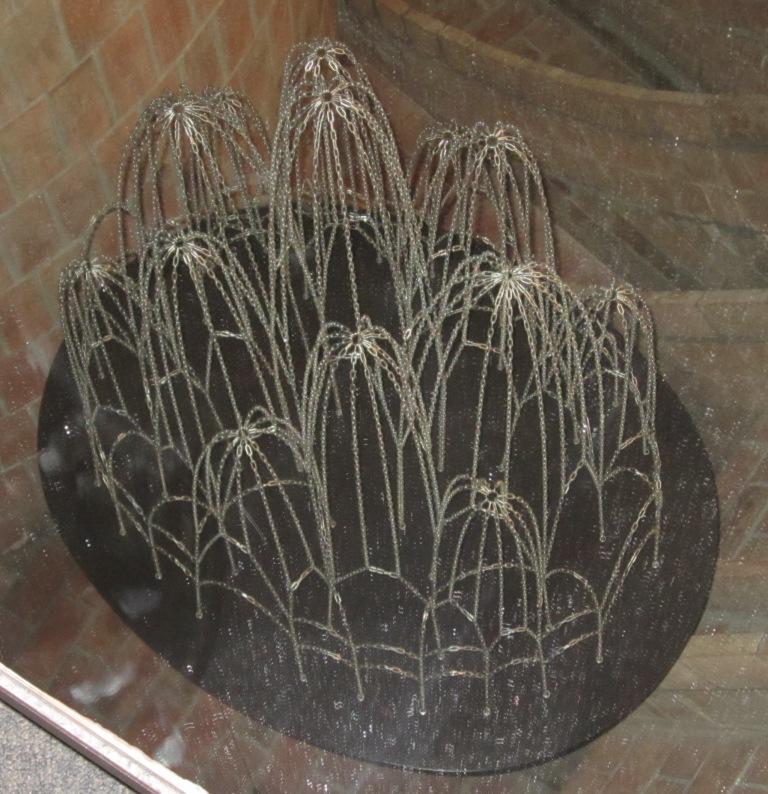
He also built a controversial looking apartment complex called Casa Mila. The most interesting thing is in the attic where the roof is supported by some very delicate looking brick arches, also designed with string. The brick work is beautiful but I could not help thinking the challenge would have been building the wooden structure to support the construction of the arches.
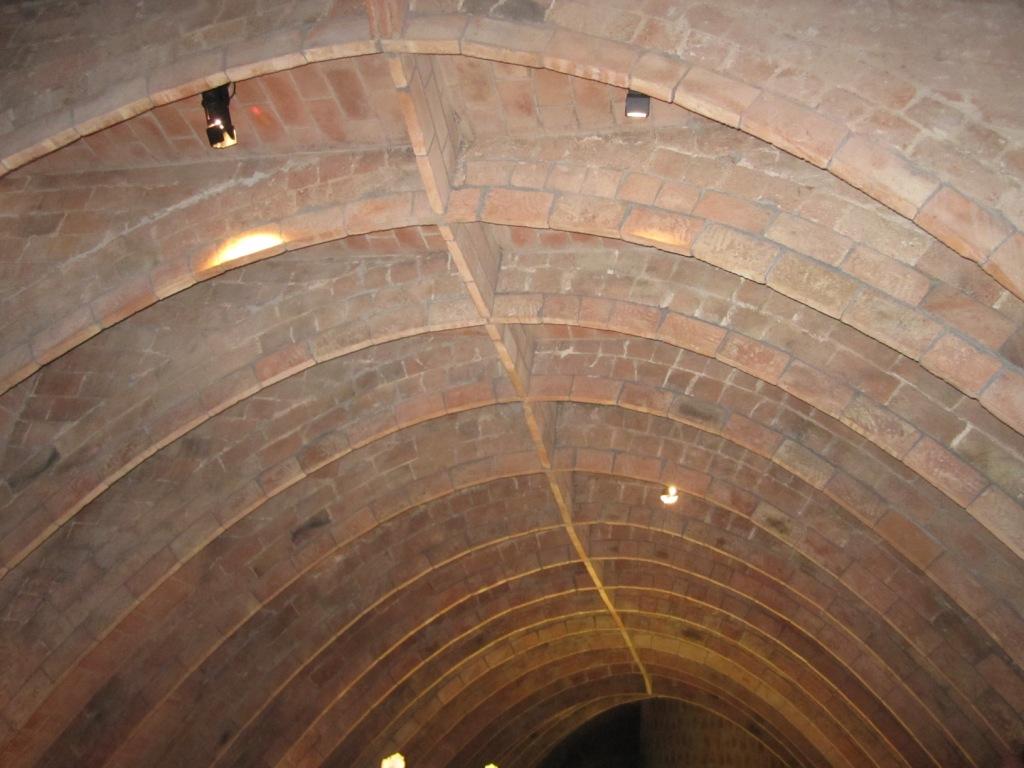
Having seen how to use string and mirrors to design parabolic arches I now want to find a woodwork project on which to put my new found knowledge to work. Not thought of a suitable project yet but when I do it will become a Show and Tell.
Enjoy your woodworking
Frank [Contact at: frankramsay8@aol.com
Workshop Visit: Bob Nisbett, Danville
Long-time BAWA member Bob Nisbett entertained us in his garage workshop and house recently by showing many of the fine pieces of furniture he has made and talking about his machines and his jig designs. Part of his training was spending 3 years at the Colledge of the Redwoods. The tour started in the garage/workshop showed many of the chairs he has designed and made in recent years.

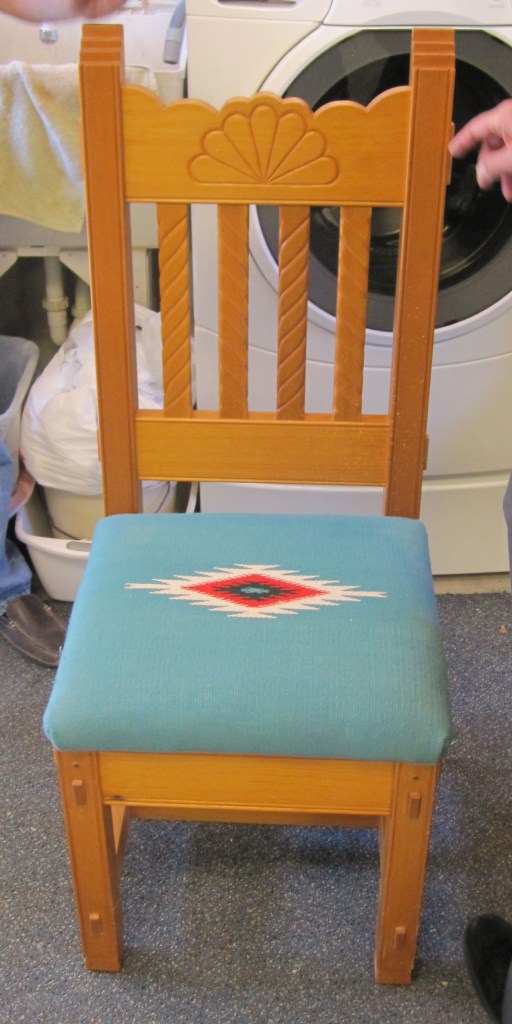
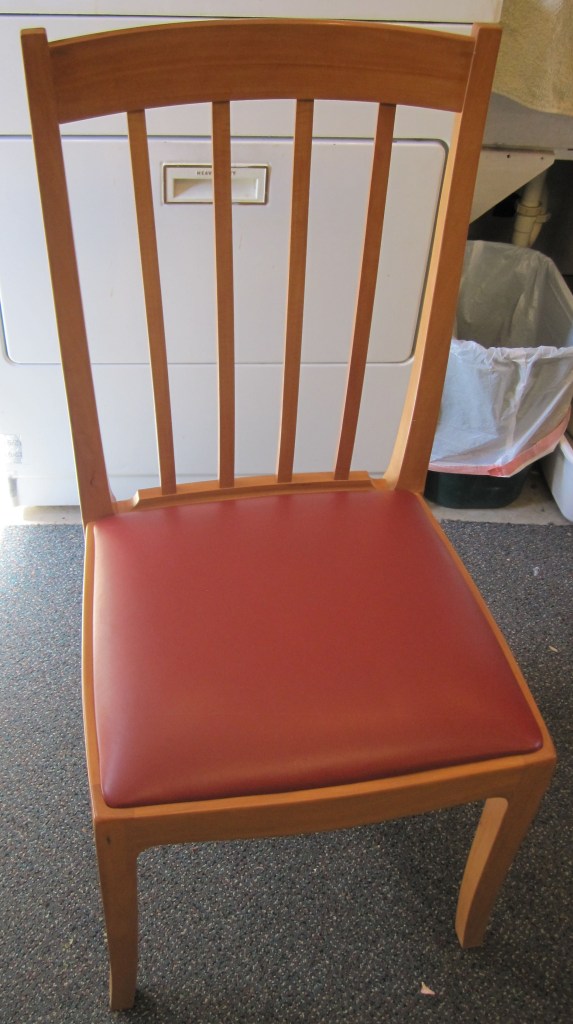
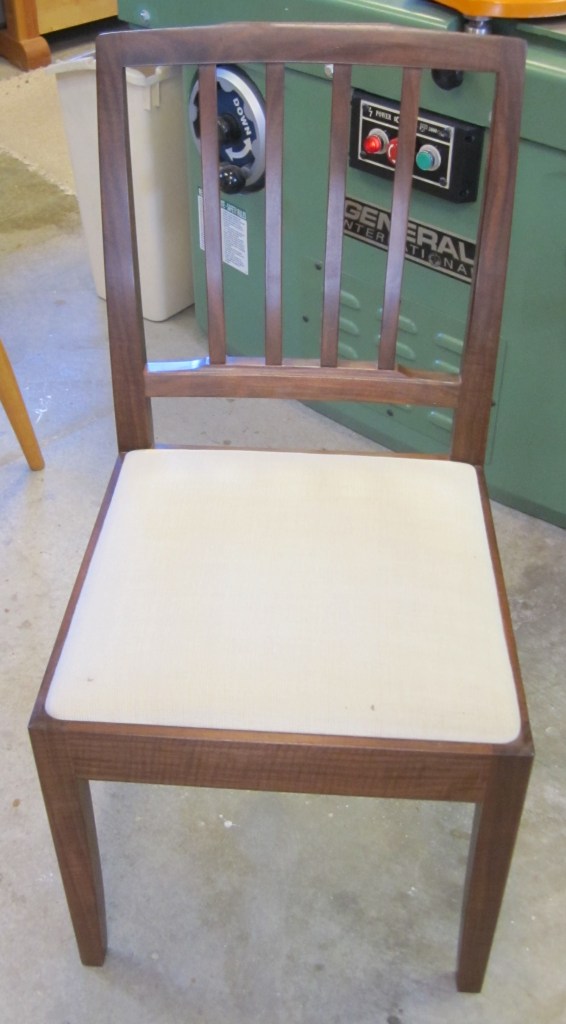
We were then shown an early prototype of a new dining chair he is designing. Bob's chair designs start with full size drawings made on the dinning room table and then move to full size poplar mock-ups whhere he can work out how to make the many angled joints and see if the design looks and feels correct.
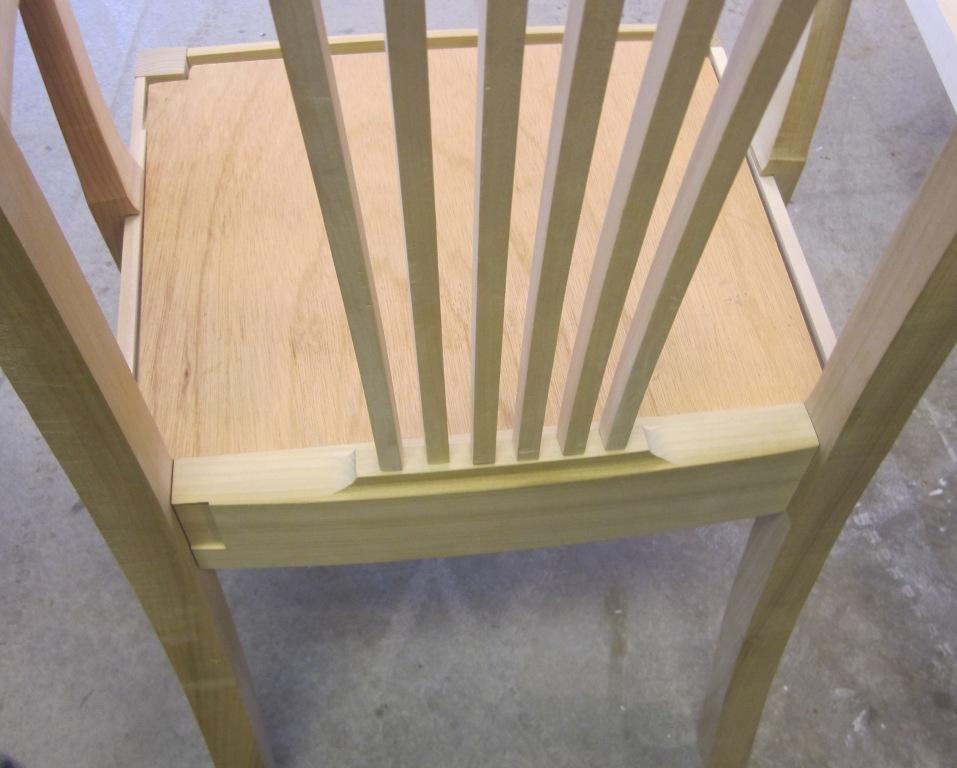
Back of protoype still in develpment
Most of his designs use prcison dowel and slip tenons.
We then had a tour of the house where we saw many exaples of the fine furniture he has made including several cabinets in the Krenov style.
Duriing the tour we reffreshed with coffee/tea accompaned by home made scones covered in home made jam.
See some of Bob's work at the College of the Redwoods website: http://www.crfinefurniture.com/nisbett.html
Member shop visit: Big Creek Lumber Company Thursday April 25th
Alex and Bob were our guides on a tour of the Big Creek Lumber Sawmill beginning at 10:45 AM and ending at 1:30 pm on Thursday April 25th. 17 BAWA members took the tour which included a visit to the sawmill operation and the filing room where the saw blades are repaired and filed. The band saw blade in the picture costs 1000 dollars and is made of Swedish steel. We saw the cutting process from the beginning in which sections of redwood tree trunk are put on the band saw carriage and rotated and sliced until the core is boxed, giving a square crossection of heartwood which is then sliced into boards. The output of the band saw is then shifted by conveyor belts over to a ripping station with layout laser lines indicating the positions of the multiple saw blades. The operator inspects and flip the boards, positions the blades and shunts the board into the cutter all within a few seconds. This is followed by crosscutting and planing, It was an impressive demonstration of the process by which we get redwood boards in the lumber yard. All the waste including bark, sawdust, and chipped wood remnants is made into a mulch product which is sold.
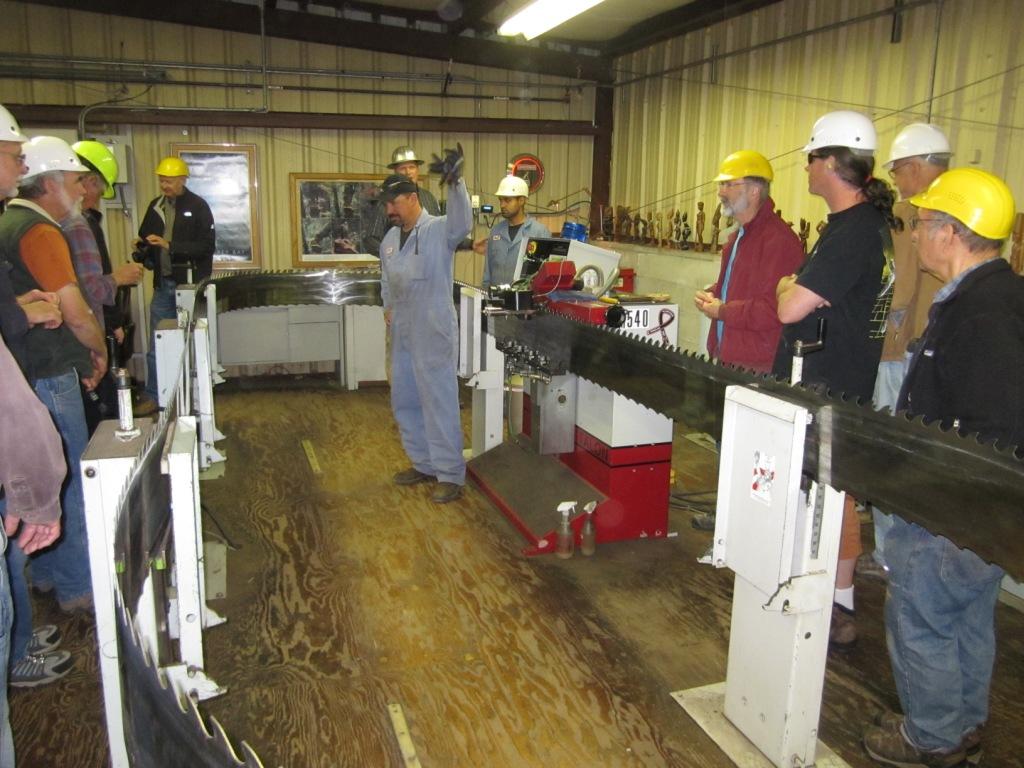
The saw sharpener talking while standing inside a saw blade
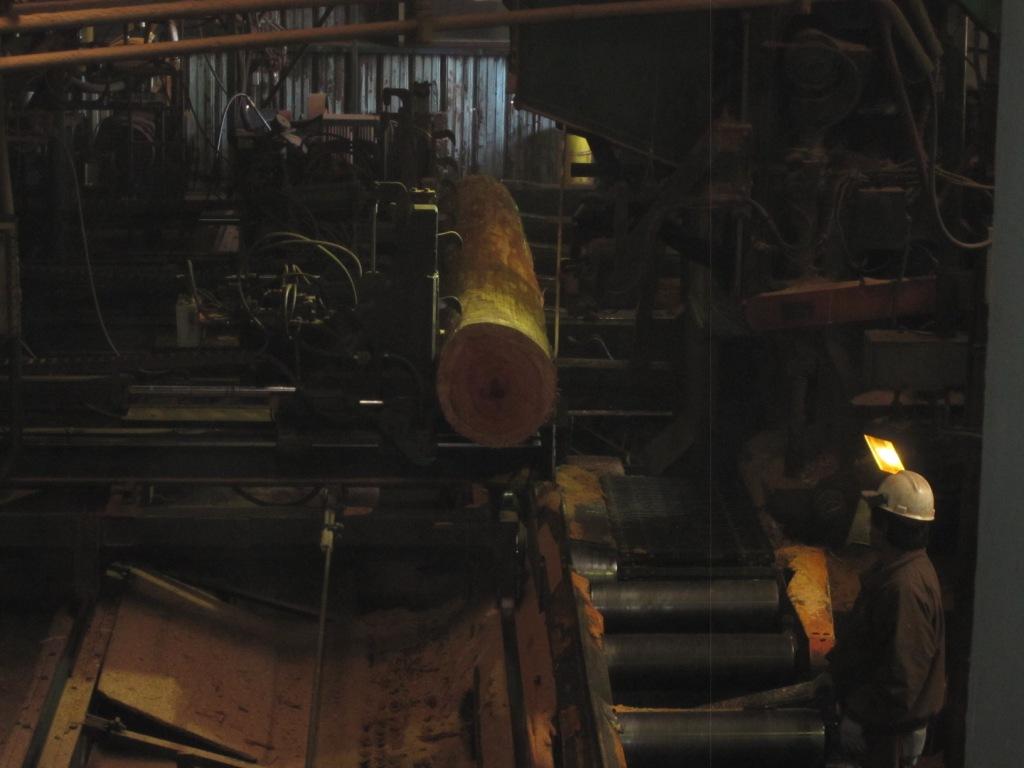
The first cut
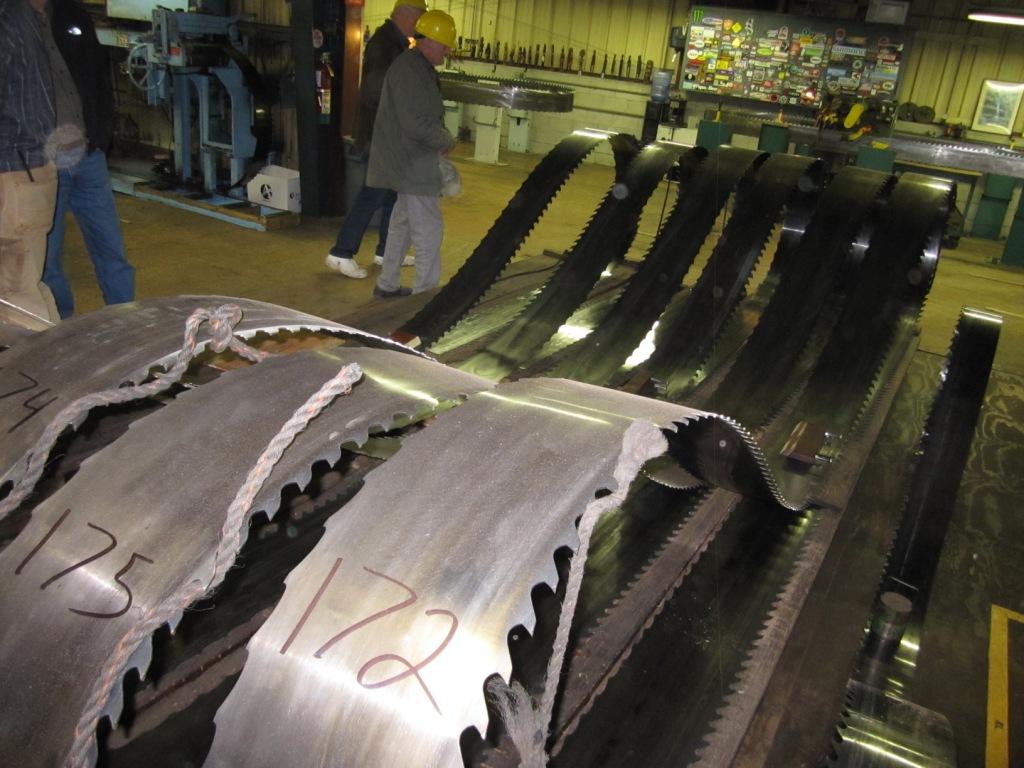
Big blades waiting to be sharpened
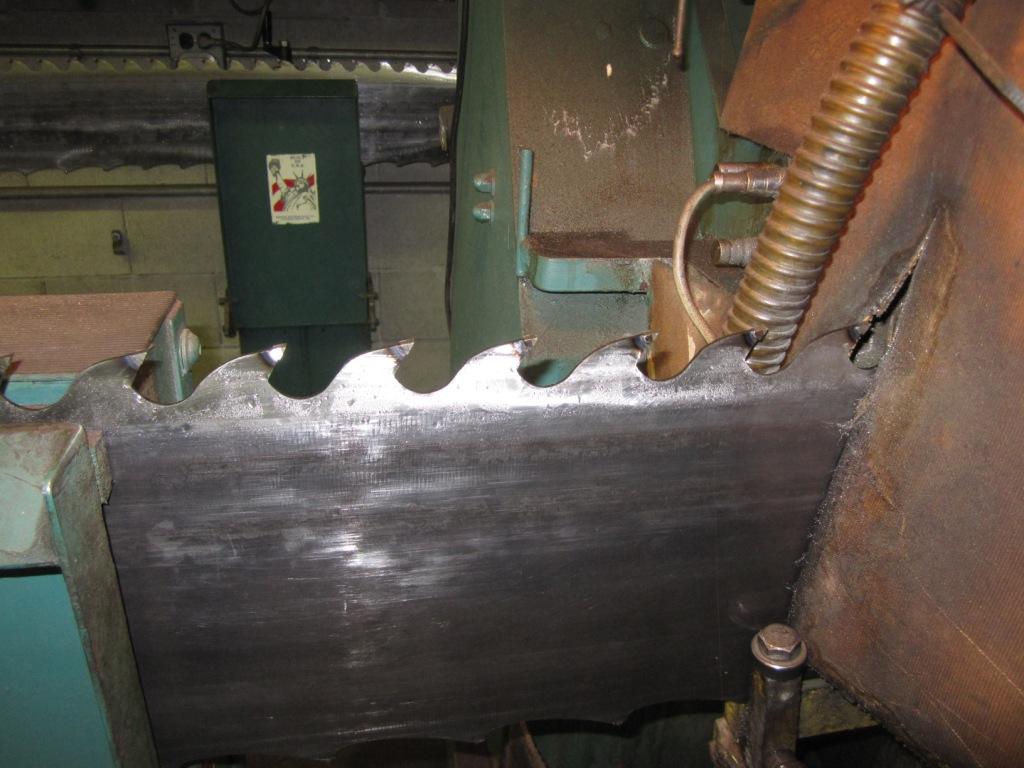
Newly ground teeth - they are repalced evry day

Cutting to length - the operator controls the bank of circular saw blades
(report by Steve)
President Frank Ramsay called the meeting to order at 7 PM. Peter Hart, a 35-year woodworker announced himself as a guest.
Announcements:
Jay talked about the Rebuilding Together event, which will take place on April 27th. Dan Goodman was able to find plumbers to do some of the work so BAWA will be able to concentrate on woodworking-building a fences, replacing a shower with shelving, installing steps, patching, and painting. Details are on the BAWA website. Contact Jay or Dan to sign up.
Events
Per talked about upcoming events, which are all described, on the website. On April 20th we will visit the shop of Bob Nisbett in Danville as well as to see the many objects he has built for his home. The visitors will also be treated to homemade scones. On April 25th there will be a visit to the Big Creek Lumber Sawmill in Davenport with a carpool from Foster City at 9:30 AM. Contact Per if you want to join the carpool. At our May meeting the speaker will be John Moldovan, a master chair maker, who will talk about the design and construction particularly of rocking chairs. In June we will hear from Joe Cox of Wild Horse Woodworking.
Neal White reported on the Plane Making Workshop, which had 5 attendees who all made successful wooden planes in the allotted time.
Jay Perrine announced the opening of the new Museum of Craft and Design in the Dogpatch neighborhood of San Francisco.
Featured Speaker - Russel Baldon, Chair, Furniture Program, California College of the Arts (CCA)

Russel Baldon was introduced by Per. Russ started by giving an autobiographical history of his life, punctuated by the works of art/woodworking that were inspired by the incidents. The lecture provided a very personal insight into Russ's creative process. Following this, he showed many works of the students at CCA, of whom he is justifiable proud. Many of the objects shown push the boundaries of what is considered furniture and take a strong turn into the area of art and sculpture.
For more information about Russ and CCA, look at the website, http://www.cca.edu/academics/faculty/rbaldon
Russ's dad was in the US Airforce and so he spent his youth on air bases. His parents divorced when he was 8 and his mom re-married a man who became a great stepfather to Russ. When his stepfather retired from the airforce, he and his wife decided to make gewgaws and toys out of wood to sell at flea markets and craft shows. Russ helped out in the shop in Atwater through high school. After graduation he moved to San Francisco and took classes at CCSF. -philosophy, printmaking, and industrial design. He then applied for a scholarship at the California College of Arts and Crafts, as it was then known, and won. At the time Gail Fredell and Kim Maruyama were the teachers in the furniture program and Russ had hoped to be able to study with them and eventually take up studio furniture making as a career. Unfortunately, Gail and Wendy both left soon thereafter and CCA hired Thom Loeser as interim chair and began a nationwide search for a new chair. They wanted and got a conceptual artist. The person hired was from the Rhode Island School of Design and had no woodworking skills. As compensation, the board hired Kim Kelzer, to teach woodworking techniques. When Russ graduated, he needed shop space so he began to work for Gail in her shop when she got a contract with Stanford to build chairs for the chapel in the Memorial Church and needed help building them. They then worked for Dorothy and George Sachs on furnishings for their home. Their next customer was a doctor who had very definite tastes and wanted only handmade furniture in his home. Russ then went to grad school at San Diego State and studied with Wendy. At that time he did some conceptual art, one example of which was a see through liquor cabinet, which was a commentary on the behaviors of some drinkers who try to conceal their imbibing passion. He also showed a candle on a tower that looked like an oil derrick as a commentary on lighthouses, a tiny child size rocking chair with silver plated steel bars, a joke high chair with 13 legs, a narrow and long chalkboard with mechanical eraser, and an exhibit with 100 small chalkboards which was inspired by street people who carry message boards as well as an aquarium with a spray head inside which makes it look like it has rain splattered inside it.
He then showed a rolling bureau made of cherry with a time capsule built into it with an opening date of September 23rd, 2095. It contains memorabilia and newspapers. Because he lived in trailers as a child he was impressed by the home of a friend which had lath and plaster walls. This led him to create a sculpture of a window with lath and plaster walls behind it. As an experiment at the University of Wisconsin, Madison, he made samples of particle board without using formaldehyde based glue, and created a set of dolls with 3 sections each: head, torso, and legs which can all be interchanged.
He then showed some work he did at a summer workshop at Emma Lake, a boreal forest in Saskatchewan. About 100 craftspeople come there and work collaboratively on several projects. No power tools are allowed. Among the objects created were a tower of aspen poles, lamps, and a rawhide axe filled with stones.
As a commission for outdoor seating for Fort Mason he created two large cypress chairs which were held to a bollard with spliced rope.
He then described a great number of student projects of which only a small sampling will be described. The next show of student work will take place at the CCA furniture School Building, 1111 8th St, SF starting May 11th. His first assignment to students is to hand them 8 sticks and ask them to design and build a chair that will support their weight. He showed several results of this exercise. Some of the other projects were a set of ladders that are planted in the sand at the beach and can then be climbed, , a stool made of layers of veneer, a footbridge over a stream built for the Tassajara Zen Center in Marin, which was actually disassembled at and rebuilt at one point because of flooding..
CNC laser cutters have also been used to form a cello bow and bridge. He showed a table of turned poplar, which was painted at an auto body shop and a wearable backpack in the shape of a house. There was an interesting bench with moss growing in the interstices, which needs to be watered regularly. The school holds a competition sponsored by the Wilsonart Company to make objects out of their brand of laminate. 6 CCA students took their projects to the International Furniture Show. The CCA student who won built a stool out of every available color of wood grain laminate in the Wilsonart catalog.
The last work shown was that of Giuseppi Ioni who graduated from the CCA BFA program. For his work he takes a log or a branch and removes the older wood until he uncovers the shape of the original sapling inside. This is quite amazing form of surgery yielding beautiful and surprising results.




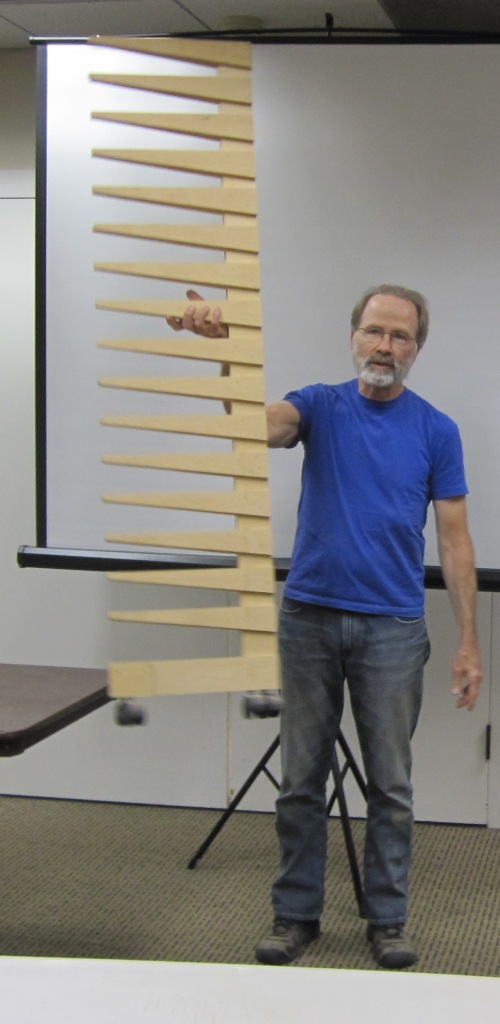
The origonal

The new (and improved?)
Following the break, there was a drying rack face-off between the original 20 year old design by Jamie Buxton and the "improved version" built by Claude Godcharles.
Claude's version is deeper than Jamie's and has a scissors structure in the back, which allows it to change width from 12 inches up to 3 feet wide.
Arnie then talked about how to sharpen a paint scraper in order to use it to smooth the surface of floorboards in hard to get at places like corners.
Stan then raffled off the door prizes and the meeting ended.
Stephen Rosenblum, Newsletter Editor steve@rosenblums.us
